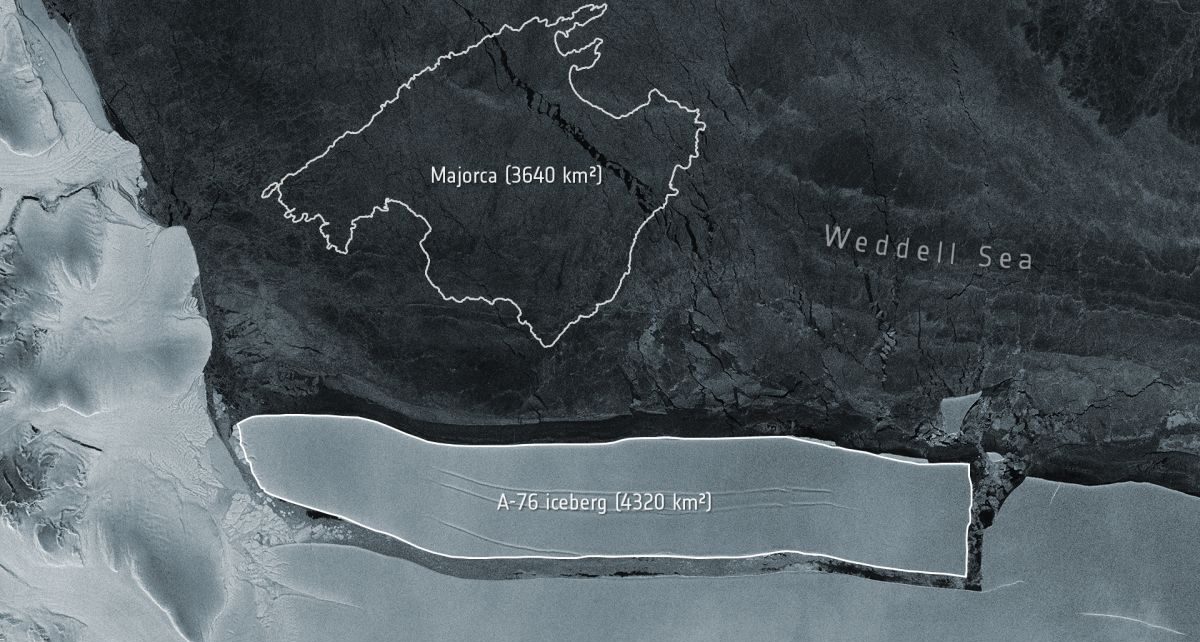An iceberg the size of the Spanish island of Majorca has broken off the coast of Antarctica, with measurements taken from satellites and planes confirming it’s now the world’s largest.
The finger-shaped iceberg, which is about 4320 square kilometres in size, isn’t thought to have been caused by anthropogenic climate change. By comparison New York City’s total area of land and water is 1,213 sq km while the Spanish island of Mallorca in the Mediterranean occupies 3,640 sq km.
Named A-76, the iceberg broke off the Ronne ice shelf into the Weddell Sea in recent days, according to the European Space Agency. The area has been spared an influx of warm ocean water affecting other parts of western Antarctica, which is threatening to release huge glaciers such as one called Thwaites.
The Ronne Ice Shelf on the flank of the Antarctic Peninsulais one of the largest of several enormous floating sheets of ice that connect to the continent’s landmass and extend out into the surrounding seas. One of its biggest calving events was in 1986, with icebergs totalling 11,000 square kilometres breaking off, followed by smaller ones in 1998, 2000 and 2015.
The enormity of A-76, which broke away from Antarctica’s Ronne ice shelf, ranks as the largest existing iceberg on the planet – surpassing A-23A, which is about 3,380 sq km and is also floating in the Weddell sea.
Periodic calving off of large chunks of those shelves is part of a natural cycle. But some ice shelves along the Antarctic Peninsula have undergone rapid disintegration in recent years, a phenomenon scientists believe may be related to climate change, according to the US National Snow & Ice Data Centre.




